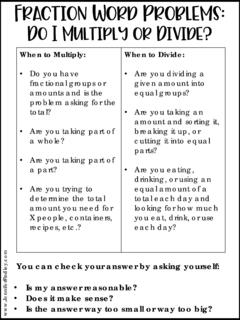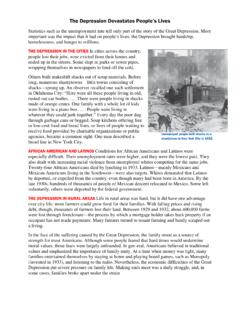Transcription of A Rose for Emily - English 11
1 The Modern Short StoryA rose for Emily Short Story by William Faulknerdid you know? William Faulkner .. dropped out of high school and took only a few college classes as a special student. worked almost three years at the post office, where he was considered lazy and inattentive, before he the AuthorToday, William Faulkner is considered one of the literary giants of the 20th century. This distinction didn t come easily, however. Faulkner took a while to find himself and his subject. Only after he decided to focus on his home state of Mississippi and his colorful family history was the full force of his creativity unleashed. Over an astonishing 13-year span, Faulkner churned out one masterpiece after another among them, The Sound and the Fury (1929), As I Lay Dying (1930), Sanctuary (1931), Absalom, Absalom! (1936), and Go Down, Moses (1942). Of these artistic achievements, only Sanctuary was a bestseller partly due to its scandalous subject matter and none of the books earned Faulkner enough money to support his growing family.
2 Although some critics raved about him, many others agreed with the New York Times that his South was too often vicious, depraved, decadent, corrupt. By 1945, most of his books were out of print. Narrative Challenges A glance at Faulkner s work would explain why readers and critics resisted his fiction. He wrote narratives on the cutting edge of the new modernism, and for the most part, he refused to compromise with the typical reader s desire for a coherent, chronological story. His novels weave numerous flashbacks into multiple story lines. They push sentence length to new limits, and two of his best-known modernist works increase the reader s challenge by using several highly unreliable narrators to tell the story. The Sound and the Fury has three first-person narrators (see pages 934-935). As I Lay Dying has fifteen. The story of a mother s dying wish, Faulkner s fifth novel switches narrators with each chapter, supplying readers with the perspective of various family members and others involved in the story.
3 It is anything but an easy In 1946, an enterprising editor named Malcolm Cowley published The Portable Faulkner, a collection of stories and novel excerpts that untangled Faulkner s elaborate saga. Cowley s blueprint plus a helpful introduction sparked new interest in Faulkner. With the anxieties of the Great Depression and World War II behind them, more readers were ready to accept Faulkner s challenge to revisit the crimes and passions of the South and America itself through a modern consciousness. William Faulkner 1897 1962 KEYWORD: HML11-1064 AVIDEO TRAILERGo to KEYWORD: HML11-1064 BAuthor OnlineNarrative ChallengesA glaat Faulkner s work would explain why readers and resisted his fiction. He wnarratives on the cuttingof the new modernism, afor the most part, he refuto compromise with the1064 READING 2B Relate the text structures of mythic literature to 20th and 21st century American novels, plays, or films. 5A Evaluate how different literary elements shape the author s portrayal of the plot and setting in works of fiction.
4 5C Analyze the impact of narration when the narrator s point of view shifts from one character to makes your skin crawl?As the girl steps outside into the alley, the overpowering smell of rotting garbage assaults her nostrils. Her stomach turns as she tries not to stare at a mass of maggots eating a discarded hamburger , and she shies away from the dumpster, with its squeaking and squirming inhabitants. Certain scenes from books or movies are so evocative that they leave you shaky and nauseated. Part of what you re responding to is the creepy atmosphere the writers or directors have created to mesmerize and repulse you. DISCUSS In a small group, talk about the one thing that really gives you the creeps. Spiders, rats, the sight of blood do any of these make your skin crawl? What movies or books have used these things to create an atmosphere that makes you shudder? Which works top your creepiness scale ? Record the responses of your group to share with others.
5 Literary analysis: point of viewAs you ve already learned, Faulkner is a pioneer of modernist fiction (see pages 934-935 and page 1064). He uses stream of consciousness, mimicking the flow of a character s thoughts and sensations to convey the subjective nature of experience. He uses multiple narrators, taking the point of view of several characters in a single novel. With each work of fiction, he crafts a point of view uniquely suited to the story being told. A rose for Emily , is the story of a small town s struggle to understand one of its residents. Using multiple narrators would be difficult in a short story. Using stream of consciousness would not convey what is most important here the public perception of Miss Emily . Faulkner s choice for point of view, then, is first-person-plural an unnamed we, the voice of the townspeople themselves. As you read, notice the narrator s use of first-person pronouns such as we and our. What role does this point of view play in your understanding of Miss Emily and her story?
6 How might other points of view change the narrative?Review: Mood reading skill: analyze sequenceFaulkner often rearranges the sequence of events in his fiction, using flashbacks to offer a window into a character s past or dropping hints that foreshadow what is yet to come. As you read, keep a chart like the one shown. In the left column, record the story s events as you read about them. When you finish the story, number the events in chronological in Which Narrator Reveals EventsOrder in Which Events Occur1. Miss Emily The aldermen visit about taxes. 7 vocabulary in contextFaulkner uses these words to create a story rich with atmosphere. Try to define each, based on its context. 1. The cabal executed their shady plans in secret. 2. The swaggering boy approached him with temerity. 3. Moonlight made the rickety house into a terrifying tableau. 4. Her imperviousness made her impossible to the activities in your Reader/Writer Notebook. 10651066 unit 5: the harlem renaissance and modernismRose William Faulknerbackground A rose for Emily , like the majority of Faulkner s stories, takes place in the fictional Yoknapatawpha County, Mississippi.
7 Published in 1930, the story portrays social customs of the small-town South at the turn of the 20th century. Be warned that the narrator refers to African Americans with a term that is offensive to contemporary readers. IWhen Miss Emily Grierson died, our whole town went to her funeral: the men through a sort of respectful affection for a fallen monument, the women mostly out of curiosity to see the inside of her house, which no one save an old manservant a combined gardener and cook had seen in at least ten years. aIt was a big, squarish frame house that had once been white, decorated with cupolas and spires and scrolled balconies in the heavily lightsome style of the seventies,1 set on what had once been our most select street. But garages and cotton gins had encroached and obliterated even the august names of that neighborhood; only Miss Emily s house was left, lifting its stubborn and coquettish decay above the cotton wagons and the gasoline pumps an eyesore among eyesores.
8 And now Miss Emily had gone to join the representatives of those august names where they lay in the cedar-bemused2 cemetery among the ranked and anonymous graves of Union and Confederate soldiers who fell at the battle of 1. the seventies: the 1870s. 2. cedar-bemused: almost lost in cedar EmilyA a point of viewIdentify the first-person-plural pronoun that establishes Faulkner s point of view in the opening paragraph. For whom does the narrator speak?1068 unit 5: the harlem renaissance and modernism 3. remitted .. perpetuity: released her from paying taxes forever from the time of her father s , Miss Emily had been a tradition, a duty, and a care; a sort of hereditary obligation upon the town, dating from that day in 1894 when Colonel Sartoris, the mayor he who fathered the edict that no Negro woman should appear on the streets without an apron remitted her taxes, the dispensation dating from the death of her father on into Not that Miss Emily would have accepted charity.
9 Colonel Sartoris invented an involved tale to the effect that Miss Emily s father had loaned money to the town, which the town, as a matter of business, preferred this way of repaying. Only a man of Colonel Sartoris generation and thought could have invented it, and only a woman could have believed the next generation, with its more modern ideas, became mayors and aldermen, this arrangement created some little dissatisfaction. On the first of the year they mailed her a tax notice. February came, and there was no reply. They wrote her a formal letter, asking her to call at the sheriff s office at her convenience. A week later the mayor wrote her himself, offering to call or to send his car for her, and received in reply a note on paper of an archaic shape, in a thin, flowing calligraphy in faded ink, to the effect that she no longer went out at all. The tax notice was also enclosed, without comment. bThey called a special meeting of the Board of Aldermen. A deputation waited upon her, knocked at the door through which no visitor had passed since she ceased giving china-painting lessons eight or ten years earlier.
10 They were admitted by the old Negro into a dim hall from which a stairway mounted into still more shadow. It smelled of dust and disuse a close, dank smell. The Negro led them into the parlor. It was furnished in heavy, leather-covered furniture. When the Negro opened the blinds of one window, they could see that the leather was cracked; and when they sat down, a faint dust rose sluggishly about their thighs, spinning with slow motes in the single sun-ray. On a tarnished gilt easel before the fireplace stood a crayon portrait of Miss Emily s rose when she entered a small, fat woman in black, with a thin gold chain descending to her waist and vanishing into her belt, leaning on an ebony cane with a tarnished gold head. Her skeleton was small and spare; perhaps that was why what would have been merely plumpness in another was obesity in her. She looked bloated, like a body long submerged in motionless water, and of that pallid hue. Her eyes, lost in the fatty ridges of her face, looked like two small pieces of coal pressed into a lump of dough as they moved from one face to another while the visitors stated their errand.










